SparkFun MicroMod ESP32 Processor
The MicroMod ESP32 Processor Board combines Espressif's ESP32 with our M.2 connector interface to bring a processor board with reliable wireless capabilities into our MicroMod ecosystem. With the M.2 MicroMod connector, connecting your ESP32 Processor is a breeze. Simply match up the key on your processor's beveled edge connector to the key on the M.2 connector and secure it with a screw (included with all Carrier Boards). If you need to swap out your processor for a strong wireless option, make sure to check out the MicroMod ESP32!
The ESP32 includes a laundry list of functionality, including the dual-core Tensilica LX6 microprocessor, 240MHz clock frequency, 520kB internal SRAM, integrated WiFi transceiver and hardware accelerated encryption (AES, SHA2, ECC, RSA-4096). With this MicroMod processor board, you have access to 8 general use IO pins, dedicated analog, digital, and PWM pins, as well as all the fan favorites - SPI, I2C, UART, and SDIO. Add to that 16MB flash storage and you've got a perfect storm of versatility.
MicroMod is a modular interface ecosystem that connects a microcontroller “processor board” to various “carrier board” peripherals. Utilizing the M.2 standard, the MicroMod standard is designed to easily swap out processors on the fly. Pair a specialized carrier board for the project you need with your choice of compatible processor!
ESP32 General Features:
- Dual-core Tensilica LX6 microprocessor
- Up to 240MHz clock frequency
- 520kB internal SRAM
- 128mbit/16MB flash storage
- Integrated 802.11 BGN WiFi transceiver
- 2.7 to 3.6V operating range
- 10-electrode capacitive touch support
- Hardware accelerated encryption (AES, SHA2, ECC, RSA-4096)
Specific Peripherals made available on MicroMod ESP32:
- 1x USB dedicated for programming and debug
- 1x UART
- 2x I2C
- 1x SPI
- 7x GPIO
- 2x Digital Pins
- 2x Analog Pins
- 2x PWM
- Status LED
- VIN Level ADC
Additional peripherals are available but are shared on dedicated MicroMod pins.
MicroMod ESP32 Processor Documentation:
- Schematic
- Eagle Files
- Board Dimensions
- Hookup Guide
- Datasheet (ESP32-D0WDQ6-V3)
- Graphical Datasheet
- GitHub Hardware Repo
MicroMod Documentation:
- SparkFun MicroMod Interface v1.0 - Pinout
- SparkFun MicroMod Interface v1.0 - Pin Descriptions
- Getting Started with MicroMod
- Designing with MicroMod
- MicroMod Info Page
- MicroMod Forums
- SparkFun Eagle Libraries contains example footprints for the M.2 connector and SMD standoff
- M.2 MicroMod Connector Datasheet
- MicroMod Reflowable Standoff Datasheet
ESP32 Documentation:
SparkFun MicroMod ESP32 Processor Product Help and Resources
Getting Started with MicroMod
October 21, 2020
Dive into the world of MicroMod - a compact interface to connect a microcontroller to various peripherals via the M.2 Connector!
Designing with MicroMod
October 21, 2020
This tutorial will walk you through the specs of the MicroMod processor and carrier board as well as the basics of incorporating the MicroMod form factor into your own PCB designs!
MicroMod ESP32 Processor Board Hookup Guide
October 21, 2020
A short hookup guide to get started with the SparkFun MicroMod ESP32 Processor Board.
SparkFun MicroMod Input and Display Carrier Board Hookup Guide
October 21, 2020
A short Hookup Guide to get started with the SparkFun MicroMod Input and Display Carrier Board
MicroMod WiFi Function Board - DA16200 Hookup Guide
November 11, 2021
Add IoT functionality to any MicroMod project with the MicroMod WiFi function Board - DA16200!
Core Skill: Programming
If a board needs code or communicates somehow, you're going to need to know how to program or interface with it. The programming skill is all about communication and code.
Skill Level: Competent - The toolchain for programming is a bit more complex and will examples may not be explicitly provided for you. You will be required to have a fundamental knowledge of programming and be required to provide your own code. You may need to modify existing libraries or code to work with your specific hardware. Sensor and hardware interfaces will be SPI or I2C.
See all skill levels
Core Skill: Electrical Prototyping
If it requires power, you need to know how much, what all the pins do, and how to hook it up. You may need to reference datasheets, schematics, and know the ins and outs of electronics.
Skill Level: Rookie - You may be required to know a bit more about the component, such as orientation, or how to hook it up, in addition to power requirements. You will need to understand polarized components.
See all skill levels
Comments
Looking for answers to technical questions?
We welcome your comments and suggestions below. However, if you are looking for solutions to technical questions please see our Technical Assistance page.
Customer Reviews
5 out of 5
Based on 1 ratings:
Extremely easy integration!
I used the MicroMod ESP32 in combination with the Input and Display Carrier board and QWIIC relay to create a remote controlled alarm clock, with a 120 dB siren, hosting a web server for remote triggering. The project was aided by the excellent documentation provided by SparkFun. I would definitely recommend both the MicroMod and QWIIC product families.

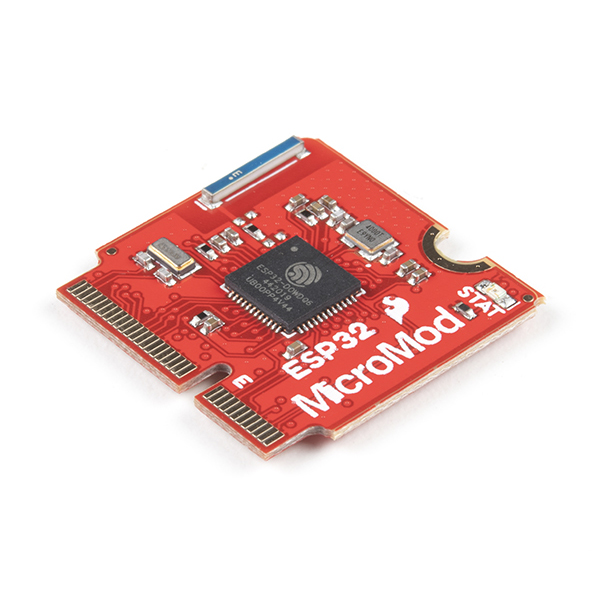

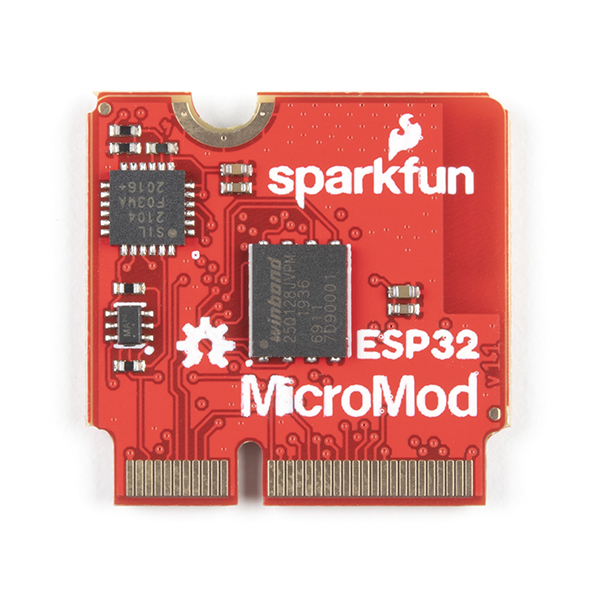
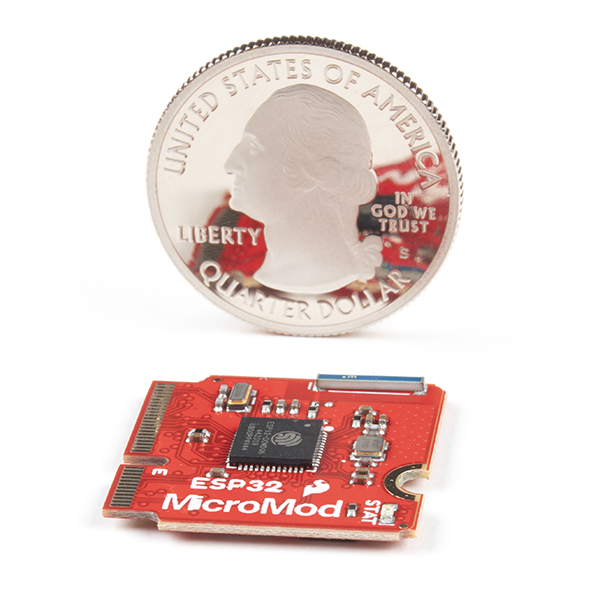
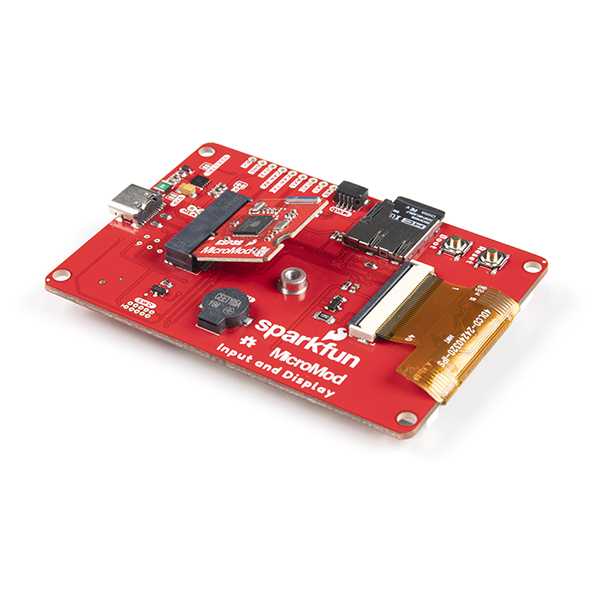
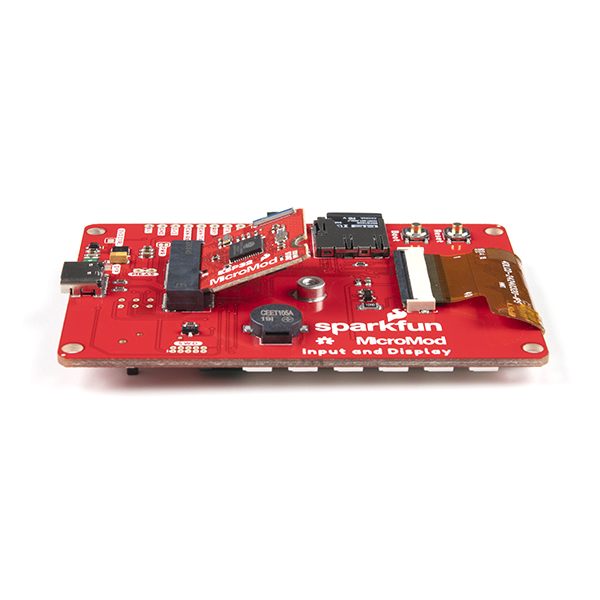
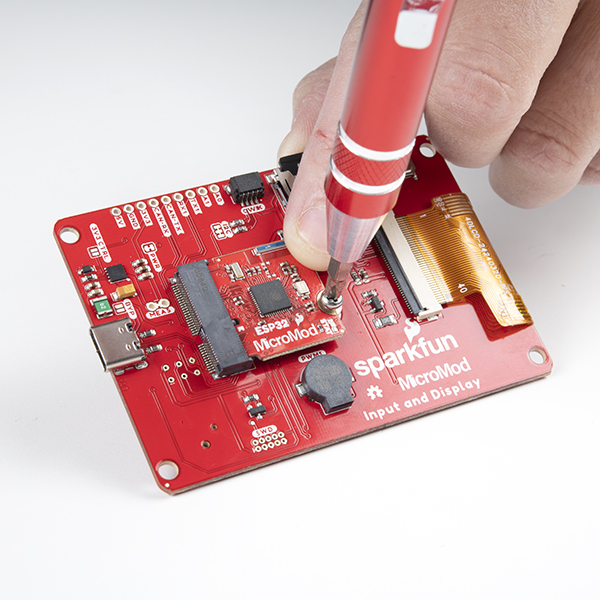
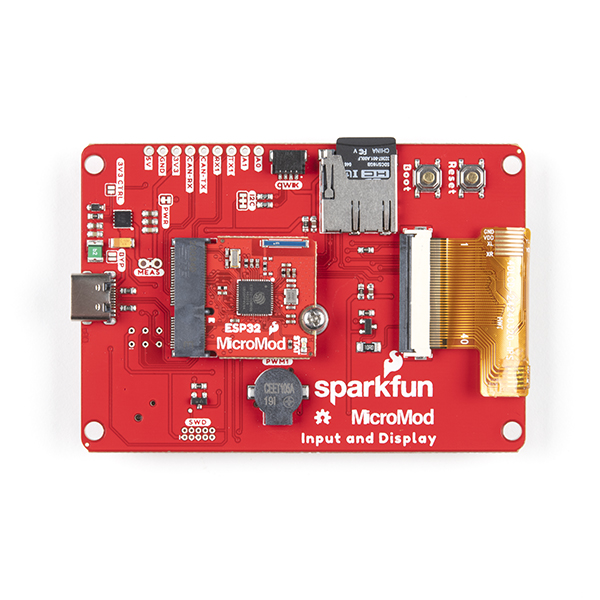
I'm having trouble picking the right config for this board in PlatformIo. Any suggestions?
I know this comment is probably before the board existing in PlatformIO. But for anyone else wondering (like myself) the board name is sparkfun_esp32micromod
Hey Sparkfun can you please give me the antenna part number, I am designing a board around the ESP32 and I would like to use this exact antenna but cannot find it in Digikey or Mouser
Never mind, I didn't realize I can select the part in EagleCAD and click Technology for the part information. For anyone who also wants to know: Johanson Technology 2500AT44M0400E
They keep flying off the shelf faster that you can keep them in stock. Someone need to have a serious talk with purchasing there. If they keep going out of stock its time to order much larger batches at a time.